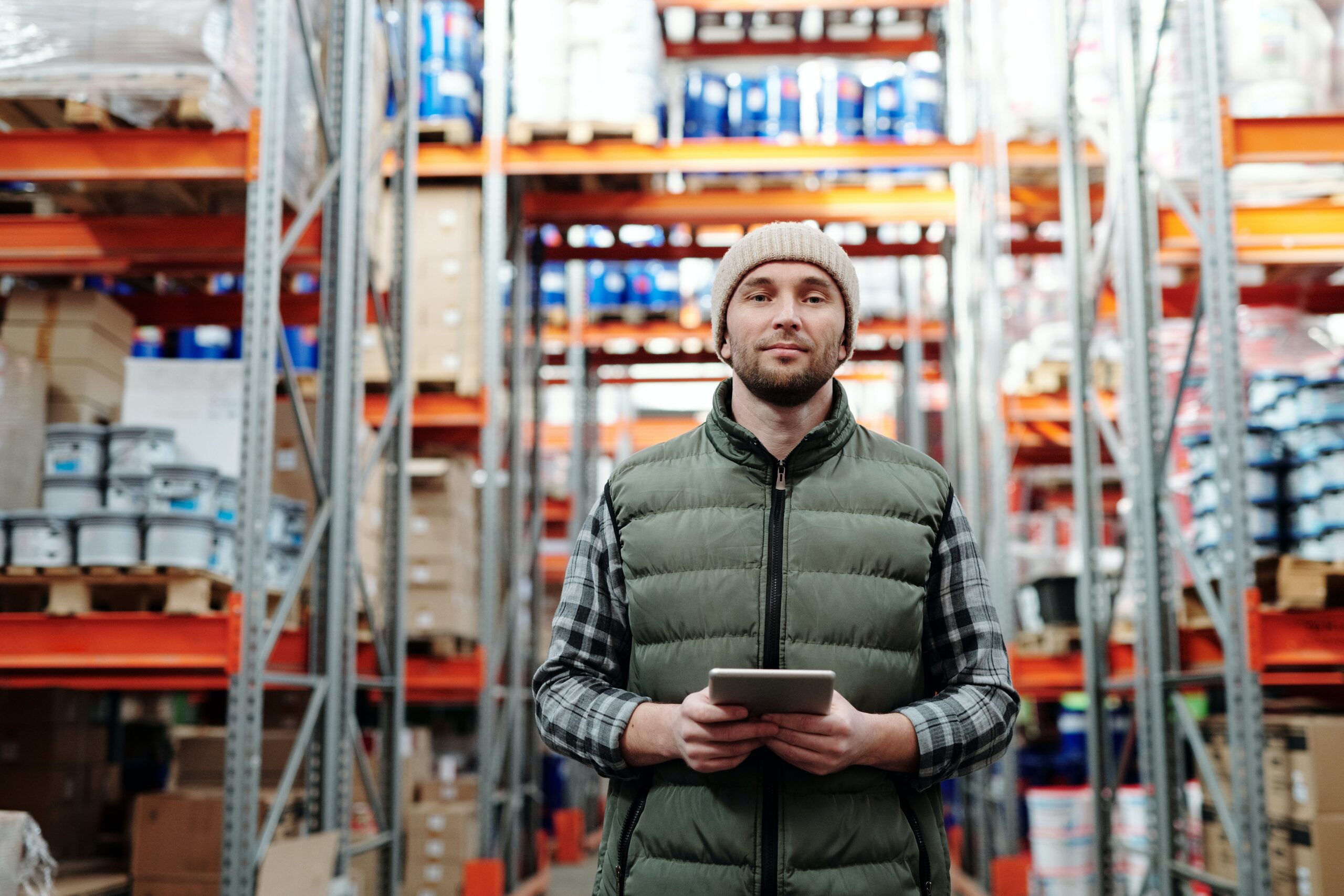
B2C e-commerce has taken the world by storm by offering unprecedented freedom and ease to consumers. Amazon, Flipkart, and Myntra represent some of the success stories in the B2C space.
But B2B is a whole different ball game for obvious reasons and requires a much more robust and strategic approach. You need to figure out your USP, convince businesses to buy from you, and then ensure there is a sustained human connection between your brand and B2B customers. And you need to do all of these while keeping step with the times.
Something relatively new like e-commerce may seem herculean to adapt to your process but oftentimes, there is opportunity in disruption. Because disruption gives rise to new ideas that can lead to advancement. The sooner you get on board the sharper an edge you will have!
Like everything, e-commerce has its pros and cons and you can argue which outweighs which. Data loss, tracking, and delayed customer care are all areas of improvement that need to be addressed. But despite drawbacks, it certainly warrants consideration, especially when there is a possibility of melding traditional commerce with its virtual counterpart for something far more effective.
So, is e-commerce a worthwhile opportunity for brands?
This article attempts to answer that very question in lucid detail. Read on…
B2B E-Commerce and It’s Current Rise To Prominence
Mckinsey & Company carried out a survey that inferred that over 90% of all B2B transactions transitioned to an online model during the pandemic. It happened because sales reps could not go and meet dealers/retailers at this time and virtual interactions became a necessity for B2B customers. This was a time of extraordinary circumstances and brands clambered to go online to keep their businesses afloat.
But this trend greatly reversed as soon as the market opened up and physical visits became possible again. It happened because the B2B e-commerce tools and systems implemented during the Covid-19 lockdown were purely aimed at facilitating order collection and nothing else. They did not create any added value for either the brands, or their B2B customers. Naturally, when things went back to normal, brands and retailers/dealers reverted to the traditional way of doing things.
But things are evolving yet again. We can notice a paradigm shift of sorts where brands are launching processes and applications that would allow B2B customers to do much more than ordering. They can now track orders, check their credit notes and account statements, be educated on new products, and more! As previously mentioned, there was no value addition in B2B e-commerce during the pandemic. It was merely a tool to facilitate ordering without much thought put into how it could reinforce physical trade. Once things normalised, this attitude changed into actually harnessing the power of e-commerce to elevate regular commercial activities in the B2B space. Today, it allows sales reps to be free of a lot of administrative and ancillary tasks. This leads to more fruitful engagement with B2B customers that then leads to better resolutions and growth.
This scenario is picking up speed in B2B trade, i.e. trade between brands and retailers or dealers. Sales reps still go to stores to push their products, discussions are still held on shelf space and merchandising plans, but now, there is a gradual shift towards a unification between traditional commerce and e-commerce in this space.
With expectations changing among retailers and dealers, old tactics have to give way to more efficient processes. As the world undergoes rapid digitalisation, B2B customers are expecting the same in their dealings with brands or sellers. When brands build their own platform or web app, there is a lot of personalisation, control, and openness involved. And B2B customers can do everything from ordering to checking their order status to getting access to 24/7 customer care to checking for available credit notes. Perhaps that is the future of trade and it certainly has a lot going for it.
On the other hand, when brands go for 3rd party e-commerce applications, they start losing touch with their B2B customers, gradually lose control over their product and deliver a monopoly to the 3rd party. This is never good for any product enterprise.
When the time-tested traditional trade meets digital commerce and they both work together, it offers brands an unique opportunity. Physical RTM (route to market) and digital RTM combine to evolve into a new form of RTM that strengthens customer engagement.
In the middle of this still-developing situation, brands are still in the process of determining what buyers genuinely want and how to optimise based on those insights. It is understandable that if you have years or decades worth of legacy infrastructure running your enterprise, it may be challenging to quickly adapt to something else.
The Inevitability of B2B E-Commerce
As already discussed, the pandemic fast forwarded the progression towards e-commerce and digitisation. There is research that corroborates this by stating that nearly half of today’s B2B purchases are done digitally. Amidst this enormous change, the real question now stands whether companies or brands will be able to take full advantage of this trend. Earlier times demonstrated that in-person interactions were irreplaceable and the only avenue for building relationships.
They are still irreplaceable.
But the scenario has changed with many B2B buyers preferring to leave the ordering, tracking, checking account statement, etc. to an online avenue while discussing issues like product quality with the sales rep. This allows the reps to focus on more meaningful things and the B2B customers to lay out their expectations more freely.
The possibilities are exciting and brands must get their digital strategies right by being capable of incorporating cutting edge technology promptly as they come into practice.
As customer touchpoints increase, the need for digital avenues in conducting trade also increases. B2C already has a thriving e-commerce presence and it’s time for B2B brands to have a share of the pie.
Here are a couple of stats for perspective:
- Wunderman Thompson states that about 62% of B2B buyers now prefer a designated smartphone app for their purchases from brands
- According to Cadvisory, the B2B market in Asia is projected to see an unprecedented growth of 12.1% per year
The wave of B2B e-commerce interactions and transactions will keep on escalating until even virtual and augmented reality will become mainstream in it. What this means is the seller or brand will be able to completely integrate with all levels of their trade infrastructure – from delivery vehicles to supplier warehouses. What was rendered to science fiction for so long may soon become a very real thing.
This doesn’t mean that the sales rep will become obsolete but instead they will have newer and more crucial roles to fit into.
Of course, this sort of transition is never easy. Every generation introduces a new way of doing things, new methods, technology or mindset, and for those doing things a certain way for a long time, change is hard. Transforming a business model is not an overnight affair and yet, it must be done.
So while brands figure out the road to the next generation of accomplishing things, they can start small by figuring out the resources they have such as available software, what needs to stay and what needs to go. Next, if caution is to be observed, an MVP or minimum viable product such as a prototype mobile app can be introduced to some B2B customers to gauge their reactions before an optimised, full-blown product can be launched. This allows for companies to test the waters while not bringing their enterprise to a standstill.
To put it simply, buyers in the future will be looking for pricing, compatibility, and shipping time along with product specifications before making any purchase. It would require brands to diligently update inventory in real time. This kind of future will quickly become a reality in many places. Again, this is not to say that e-commerce trumps traditional commerce (we need both concurrently) but brands must ensure that they are capable of adapting to state-of-the-art technology for enhanced customer engagement.
Where E-Commerce Soars and Where It Does Not
E-commerce was a boon to trade in that it shattered the age-old myth that businesses were restricted to face time or a physical structure. It opened up doors in the B2C or D2C channels that allowed brands to reach a much larger consumer base than was possible otherwise. Although face time and physical visits still remain an important factor of operational excellence in B2B transactions, it is no longer the only requisite to place orders. With a well-designed mobile platform or web portal bridging the gap between buyers and sellers, store owners can easily do a number of previously time-intensive and resource-intensive tasks, all on their own time.
Of course, nothing is without its pros and cons. So, why don’t we break these down below to help us decide if this transition is worthwhile in terms of efficiency, costs, and sustainability.
The Hits
- More brand recognition: The pedigree of a reliable brand today is an online presence. Sure, we have all kinds of local or less known brands out there on store shelves, but how many of those do consumers go for? Are they potentially good for offtakes? Are they competitive? These are all questions a retailer ponders. A mobile app that’s easy to navigate through and has an attractive UI directly affects buyer psyche in the B2B space. This is why many brands are building their own mobile platform or outsourcing to a third party.
- The market becomes predictable: Stability defines B2B markets. Unlike consumers, retailers or dealers have to go through significantly more touchpoints, ensuring that customer lifetime is concurrently high with the sales cycle. B2B customers are in it for the long haul with larger order values and commitment. E-commerce is supposed to make that experience smoother, creating satisfaction that then leads to stability. Stability allows adaptability to changes that, in turn, results in better predictability of market behaviour. A brand acquires and retains more customers by calibrating their approach based on such predictions.
- Marketing costs go down/sales go up: E-commerce necessitates heavy use of automated processes that streamline supply chain management. Additionally, this reduces errors and excess spending that ultimately enhances a brand’s bottomline. Such a process allows everyone from brand to customers in the B2B space to be on the same page on matters of ordering, order size, etc. While this definitely boosts sales, product owners also get a much better chance to highlight their products on an online platform such as a mobile app and in turn, create excellent upselling and cross-selling scenarios.
- Data is God: Objective analysis is the calling card of the best enterprises. Top names always make decisions based on accurate sales and other data that are gathered meticulously. This prevents errors, helps change strategies, and even allows for forecasting that ultimately streamlines the whole process. All of this is easier on a reliable e-commerce platform that saves historical data, among other things.
The Misses
- Market limitations: Unlike B2C, the market base for B2B brands is constrained for the simple reason that there are more consumers out there than retailers or dealers. For small brands in the space, there is some risk involved as any lost opportunity may not be easily remedied as in B2C, where there is always a consumer around the corner. E-commerce does offer some extra reach but the limitations remain.
- Security risks and data loss: Security is everything when you are dealing online. Unlike the real world, online thefts and breaches rarely leave a footprint for you to recover stolen data. With cyber terrorism on the rise, the virtual world is very much vulnerable to attacks; your own and customer data can be unlawfully acquired by criminals or a virus can end up deleting everything. Robust security infrastructure and stringent privacy practices are the signature of a platform’s reliability and are invaluable before initiating e-commerce.
- Reduced human interaction: It’s a well-accepted fact that e-commerce isn’t a replacement for face time between brands and retailers. However, there are companies who may go the complete virtual route and as such cut off all human interaction; a completely automated process. Despite the cost-savings and efficiency, it can potentially hamper relationship building and affect loyalty in the long run. Even with the ideal combination of e-commerce and regular commerce, some opportunities, exclusive to physical interactions, are lost.
- Technical challenges: All online applications require specialists who can carry out regular maintenance or repairs during technical issues. They would need to be trained and salaried and even then, there is no guarantee that a severe technical breakdown causing immense loss of business wouldn’t occur at some point. Additionally, regular maintenance also involves downtime that can lead to further missed opportunities.
Is It A Boon or a Hindrance To Trade?
Progress is the support on which civilization stands. Trade or commerce needs to evolve at every turn to keep up with growing demands and changing expectations. E-commerce is a child of this very scenario that harnesses the internet and the virtual space to conduct trade between buyers and sellers over thousands of miles, even cross-country. It is clear today that players in the B2B space are growing comfortable with online commerce in addition to the traditional commerce they are used to.
Those who called this a gimmick only a few years back and claimed that virtual trading could never replace physical interactions now accept that the commercial landscape has changed. The digital still hasn’t replaced the physical and probably never will, but instead, they complement one another.
We assert that one cannot work without the other. Sticking to an age-old physical store and shunning e-commerce is much of a folly as it is to disregard the power of brand-customer face time. For so many millenia, farmers or manufacturers or “brands” used to go to stores or shops, talk to the owner, try convincing them, and if successful, start a business relationship. Today, brands can promote themselves on social media, in addition to real-world efforts, and offer e-commerce channels to potential and existing customers for ease of ordering, status checks, and collaboration.
Looking at all of this tells me that we are already beyond a certain threshold. We cannot go back. This ties in with the fact that businesses always look to expand with time. With it comes new tech, new methods, and most importantly, new outlooks. E-commerce in B2B is an opportunity that brands can choose to ignore at their own risk. One can fall behind or be totally knocked out of the race if they do not adapt to changing business standards and expectations. This change is here for good and with its benefits making the dangers associated with it seem somewhat trivial, you can either jump on the bandwagon or become obsolete, fast.


































